RENATE ALLER The Space Between Memory and Expectation |
a solo exhibition at the Brattleboro Museum & Art Center
curated by Sarah Freemann
The Interval—the space in between—is about the moments during which apparently nothing happens; but without these moments, change is impossible. The Space Between Memory and Expectation is another way to describe this stillness and transition.
The gradual disappearance of the Earth’s permafrost is a major cause of landslides. Entire glaciers, essential sources of drinking water and crop irrigation, disappear and never return. The images in this exhibit create an immersive experience for the viewer and show the interconnectedness of distant environments, presenting the familiar and the known in an intimate way, and connecting them to parallel realities in far-off locations.
From the top of Himalayan mountains, a silent and continuous erosion trickles from glaciers through tropical forests, sand dunes, Patagonian icefields, and European glaciers into the ocean. Tracing an unbroken line, the eye is guided from one sweeping landscape to the next without doubting their separateness in location and origin.
Intentionally paired images form an immersive panorama, opening up conversations among the different political, emotional, and actual landscapes in which we live.
— Renate Aller
“The Space between Memory and Expectation”
text below by Sarah Freeman
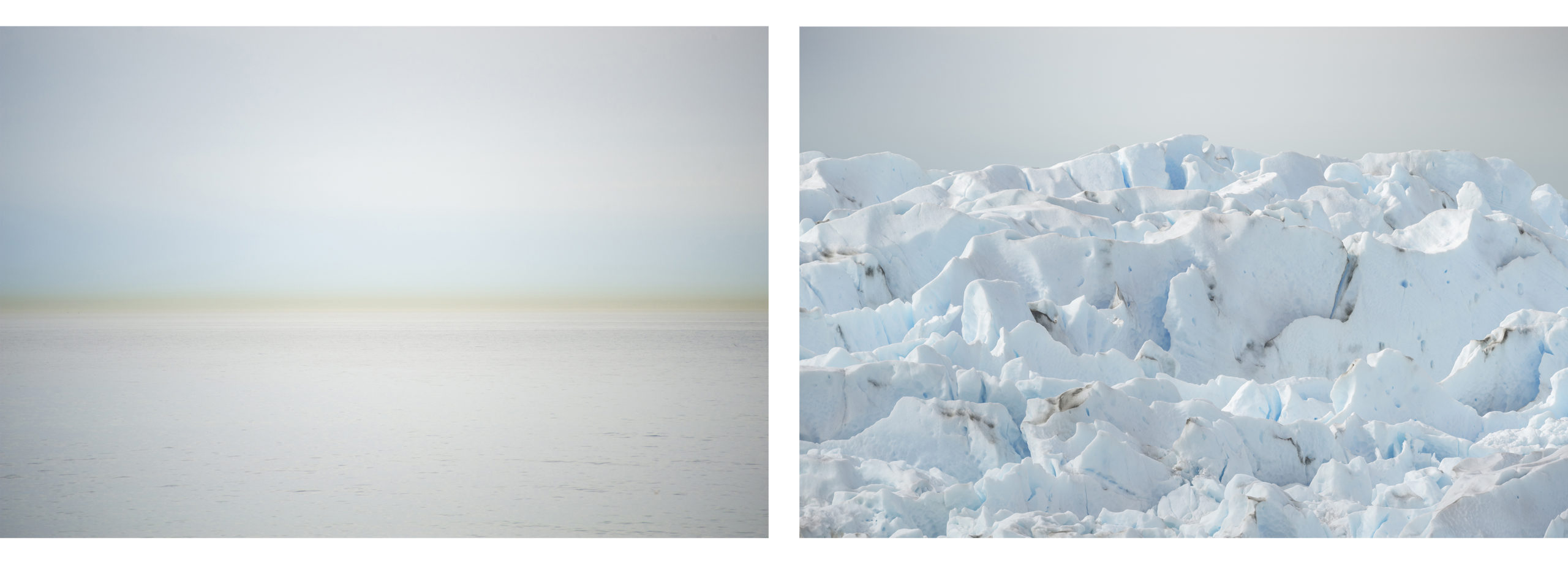
Renate Aller uses large-format photographic installations to create “picture windows” that invite the viewer to enter into an immersive visual environment. Aller offers us images of breathtaking landscapes, and we unquestioningly follow her as she directs our gaze straight on and in. The photographs take us from pale sand dunes to the vastness of the Atlantic ocean—from the majesty of the Alps to the intimacy of a forest floor in Florida. Throughout, we are absorbed by the textures of the landscapes and all that they imply: movement, change, time, and human influence.

Aller’s photographs portray a stillness that belies a state of constant flux and movement of these natural environments—melting and eroding, changing with the seasons and the wind, never the same as they were seconds ago. Aller does not use drone technology for her photos. She is physically present in each location, looking through her camera’s viewfinder, bearing witness—and we see through her eyes. In these photographs, Aller asks us to immerse ourselves in our surroundings, to notice every fissure, stipple, vein, and crag, with the understanding that this moment she has frozen in time has passed, and we will never experience the same landscape again.
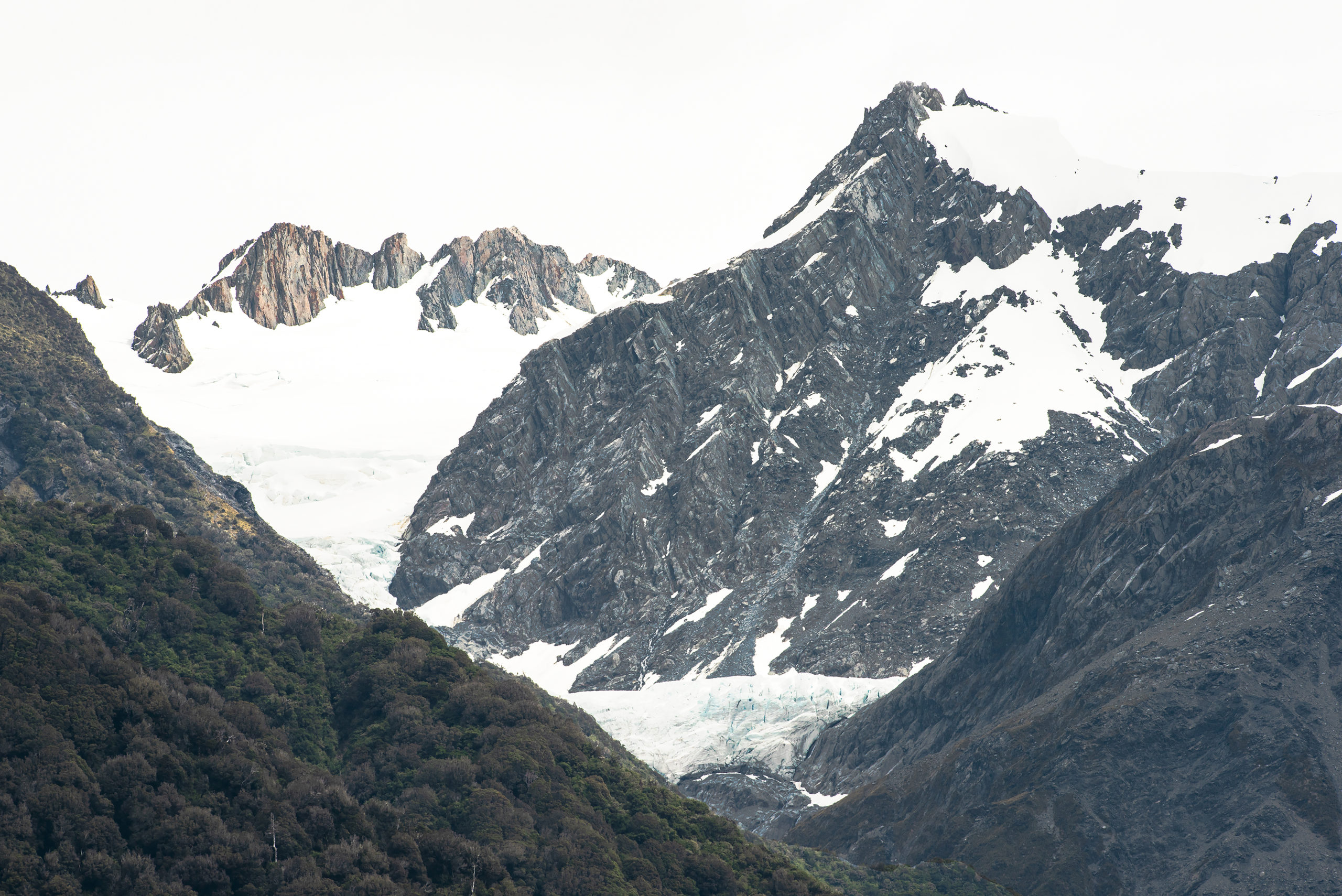
The textures that draw us into the large photographs are made even more palpable in an image of a juniper tree printed on ash wood veneer. The grain of the ash invites the viewer to consider the surface of the piece, its material, and its relationship to the juniper in the photo. Aller celebrates the many gifts juniper trees have given us: Their sap has antibacterial and antifungal properties, it has been used for its healing potential for centuries, and in some cultures its wood is burned as incense. Junipers can easily grow in places where other plants cannot survive, its presence symbolizing hope.
Aller honors the ash tree by using its wood as the surface on which the photograph is printed. Ash is a tree that is dying out throughout the forests of North America. Aller says, “The juniper trees are presented with pigment ink on ash wood veneer in the spirit of reciprocity… By bringing both trees together into one sculptural piece, I am wrapping the ash tree with the resilience of the juniper tree’s spirit.”
Ideas of reciprocity and interconnectedness also inhabit the site-specific installation Aller has created on the stage space of the exhibit, using rocks borrowed from the West Brattleboro home of artists Wolf Kahn and Emily Mason. The moss and lichen covering the rocks play an important role in keeping forests alive as they filter water, maintain moisture, and offer protection from erosion. The stones serve the same purpose as the landscapes Aller has captured from around the globe. But instead of being frozen in time, this ephemeral installation will change before our eyes, further encouraging us to be awake to the present and to the changes taking place in our natural environments.
In the introduction to his book of essays Art Can Help, photographer Robert Adams writes, “It is the responsibility of artists to pay attention to the world, pleasant or otherwise, and to help us live respectfully in it.” Aller’s work calls attention to the details and the often indescribable forces that connect us to our surroundings—and to each other. Aller’s work whispers in our ears, telling us to look, take a breath, and look again.
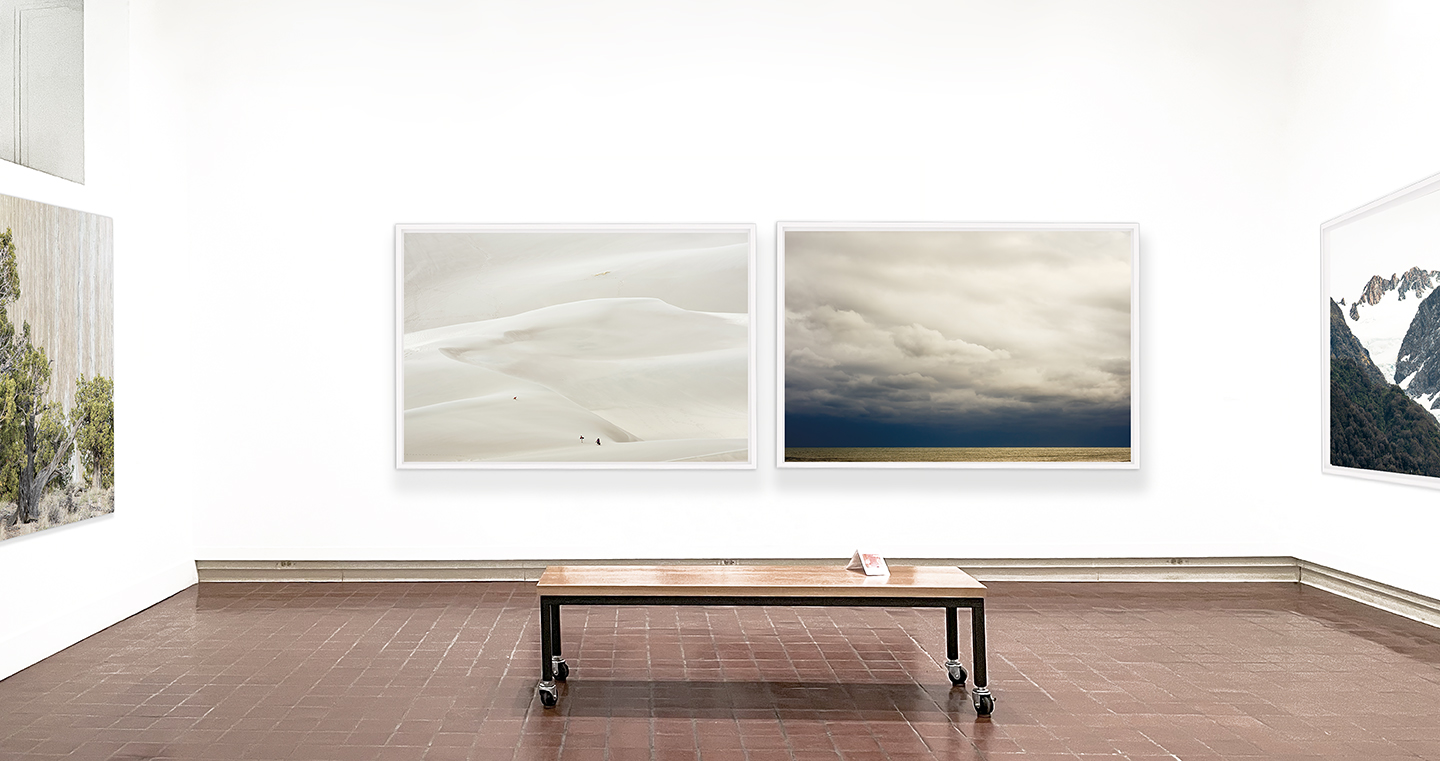
| solo museum exhibition by Renate Aller | 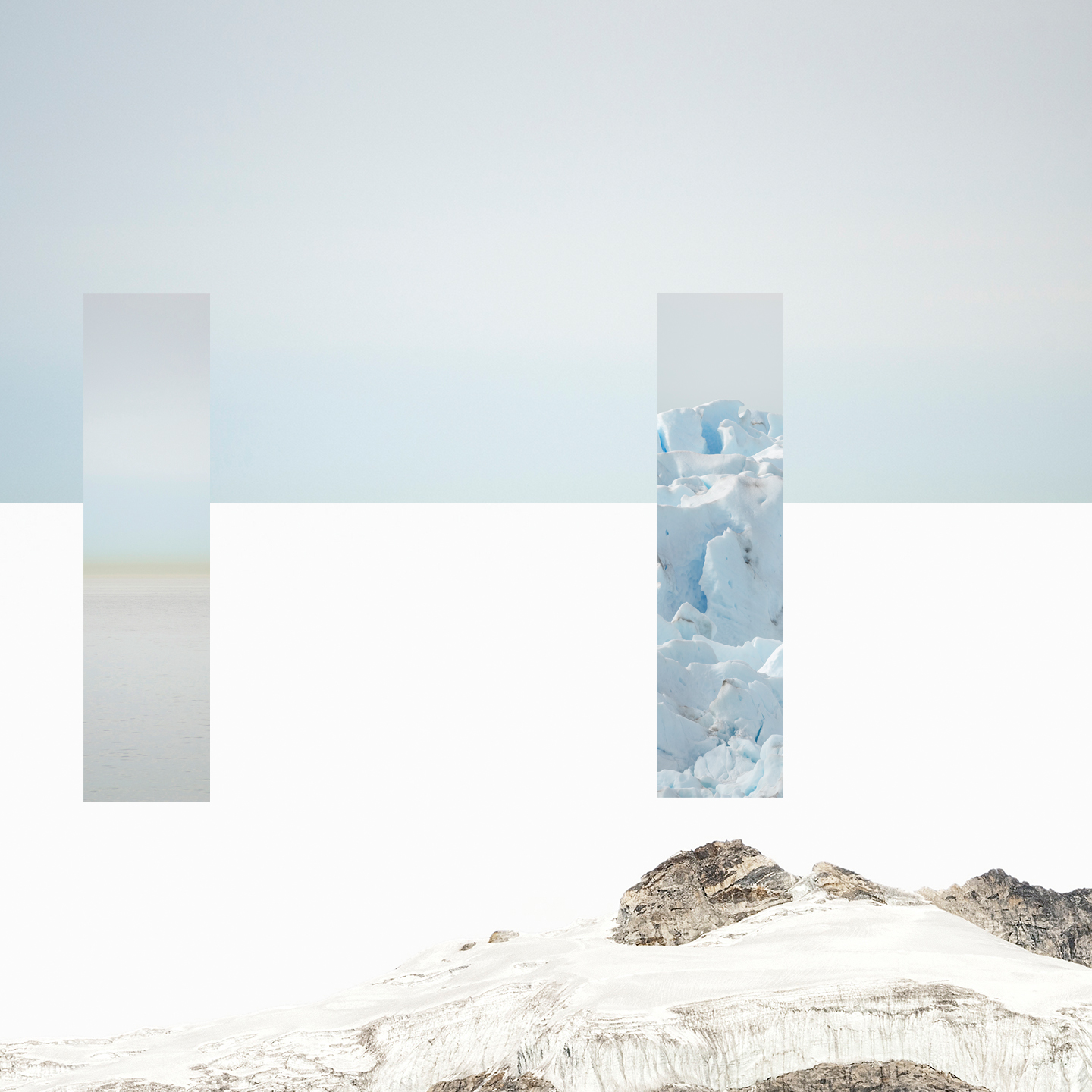 |
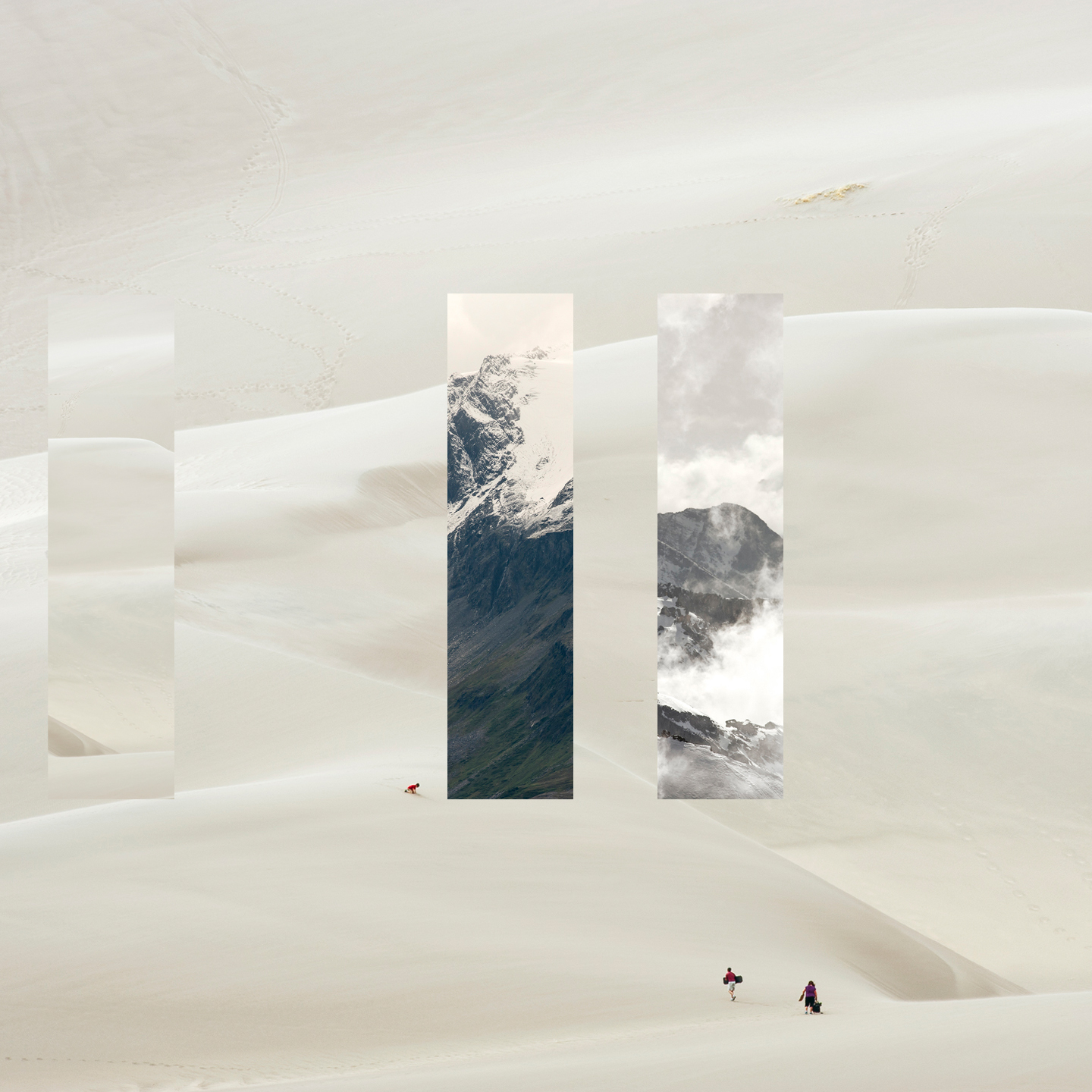 | October 22, 2022 – February 12, 2023 |
| exhibition catalogue cover INTERCONNECTEDNESS |
— Sarah Freeman, Curator
This exhibition is made possible in part by a generous gift from Ann McDonald and Charles Raubicheck, in loving memory of Lucy Cottrell MacDonald.
RELATED EVENTS
December 3, Saturday, 5 p.m. — Artist Conversation: Renate Aller and Arezoo Moseni
January 13, Thursday, 7 p.m. — Artist & Curator Conversation: Renate Aller & Makeda Djata Best
 | Brattleboro Museum & Art Center 10 Vernon Street, Brattleboro, VT 05301 www.brattleboromuseum.org/ |